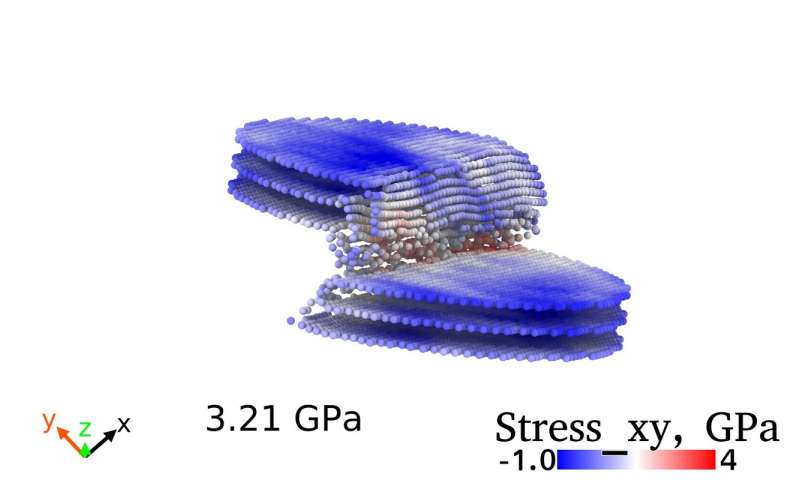Scientists Create Technology Based on Aluminum to Produce New Materials in Aviation

Scientists from South Ural state University and Chelyabinsk State University are engaged in creating a new structural material with unique properties based on aluminum alloys. The purpose of the study was to obtain a light alloy of high strength to be used in aviation, rocketry and the space industry. The results of the study are published in the International Journal of Plasticity. The article presents the features of plastic deformation in aluminum alloys.
The strength of aluminum is relatively low, and in the XIX century it was believed that it can only be used as decorative elements. The history of aluminum as a structural material began in the early twentieth century when the first of the relatively strong aluminum alloys (duralumin) was created. The addition of copper and magnesium with subsequent quenching and holding at a certain temperature contribute to an increase in the strength of the alloy compared to the initial strength of pure metal by more than 3 times.
Promptly after the advent of duralumin, it began to be widely used in the emerging aircraft industry, where sufficiently strong and lightweight material was needed. In addition, the role of aluminum and its alloys in industry has grown steadily and is currently used everywhere from food packaging to spacecraft shields.
"The body of the aircraft, and most importantly, the wings are made of aluminum alloys, which are gradually deformed and damaged at the microstructure level, i.e. become more fragile and therefore less durable. The development of methods for assessing the long-term behavior of alloys was successfully carried out in the twentieth century, and today aviation technology is considered the safest in the number of accidents per number of passengers carried. However, the widespread use of aluminum alloys in increasingly critical assemblies of various equipment including space and military products requires a detailed understanding of the plastic deformation mechanisms in them, the accumulation of damage during operation, and ultimately, fatigue failure. The use of it as protective screens imposes high requirements on the description of the properties of aluminum, implying the possibility of high-speed penetration of it, for example, by micrometeorites. That is why we are studying the features of plastic deformation development in aluminum alloys"—says Vasily Krasnikov, a researcher at the SUSU Laboratory of Functional Materials.
Scientists will be able to predict the behavior of new alloys.
Using X-ray methods or electron beam microscopy, traditional materials science studies the microstructure of a substance before or after deformation, which complicates the interpretation of micro mechanisms of plastic deformation. Today, methods for modeling atomic systems have been sufficiently developed and after computer calculations, scientists are able to understand how individual atoms interact. Currently, such experiments are made by scientific groups not only in Russia, but also in Germany, Spain, the United States and China.
"In our work, we observe plastic deformation of an aluminum sample containing copper atoms as a reinforcing component. In this case, the mutual arrangement of aluminum and copper atoms is the same as in real alloys. Having created this arrangement, we further subject it to deformation and register both the main mechanisms of plastic deformation at the atomic level and the numerical characteristics of this process. A separate task is the transfer of atomistic modeling data to the level of describing the behavior of large volumes of material. Our group is currently working in this direction; and methods have been built to simulate the propagation of stress waves through material arising from intense impacts," notes Vasily Krasnikov.
Further development of this work is a full cycle of the aluminum alloys behavior simulation, taking into account the peculiarities of their microstructure that depends on the chemical composition and strength, the data obtained will be included in the continuum models and generating of modeling techniques for final products of industry. This combined method will significantly reduce the cycle of product design development and selection of specific materials and to predict their behavior under extreme loading conditions in case of collision with penetrating objects or crumpling. Thus, this method of manufacturing aluminum alloys will allow scientists to obtain a new structural material for the aviation industry, and its properties will be set and predicted in advance.
More information:
V.S. Krasnikov et al. Interaction of dislocation with GP zones or θ" phase precipitates in aluminum: Atomistic simulations and dislocation dynamics, International Journal of Plasticity (2019). DOI: 10.1016/j.ijplas.2019.09.008
Provided by South Ural State University